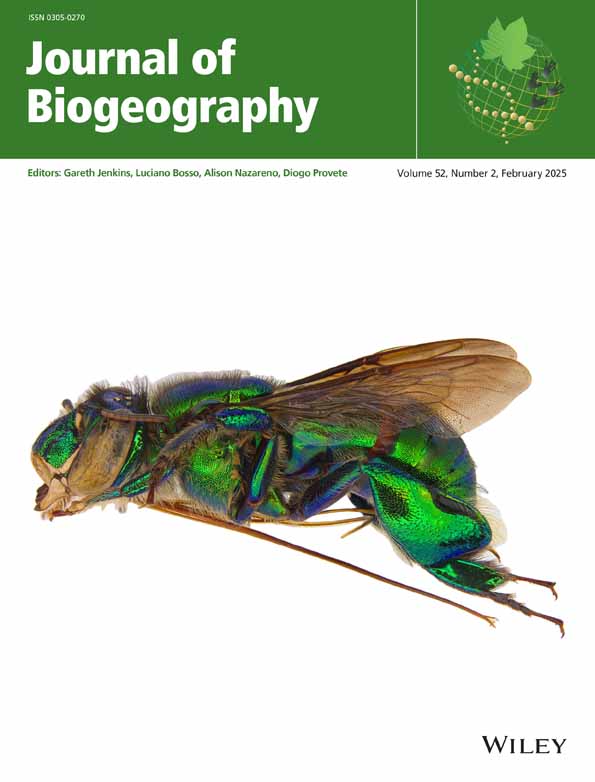Latitudinal Patterns and Macroclimatic Drivers of Phylogenetic Structure in Regional Liverwort Assemblages in North America
Funding: The authors received no specific funding for this work.
ABSTRACT
Aim
Most plant groups originated under tropical conditions, leading to the hypothesis of tropical niche conservatism, according to which species assemblages of a clade originating and diversifying in tropical climates are expected to have low phylogenetic diversity and dispersion in temperate climates because only few lineages have adapted to these novel conditions. The opposite may be expected for clades originating under temperate conditions, but this temperate niche conservatism hypothesis has not been tested for a broad temperature gradient including both tropical and arctic climates. Liverworts are thought to have originated in temperate climates, and may thus follow the pattern of temperate niche conservatism. Here, we test this hypothesis using regional liverwort floras across a nearly full temperature gradient from tropical through temperate to arctic climates in North America. In addition, we investigate whether temperature-related variables and climate extreme variables play a more important role in determining phylogenetic structure of liverwort assemblages, compared to precipitation-related variables and climate seasonality variables, respectively.
Location
North America.
Taxon
Liverworts (Marchantiophyta).
Methods
Phylogenetic diversity (measured as mean pairwise distance) and phylogenetic dispersion (measured as standardised effect size of mean pairwise distance) in liverworts in regional floras in North America were related to latitude and climatic variables. Variation partitioning analysis was used to assess the relative importance of temperature- versus precipitation-related variables and of climate extremes versus seasonality on phylogenetic diversity and dispersion.
Results
Phylogenetic diversity and dispersion in liverworts is highest in temperate climates, compared to both tropical and arctic climates. Temperature-related variables and climate extreme variables explained more variation in phylogenetic diversity and dispersion of liverwort assemblages than did precipitation-related variables and climate seasonality variables, respectively.
Main Conclusions
Variations in phylogenetic diversity and dispersion in liverworts along the latitudinal gradient in North America are consistent with the temperate niche conservatism hypothesis.
Conflicts of Interest
The authors declare no conflicts of interest.
Open Research
Data Availability Statement
This study used liverwort species distribution data available from the Figshare Repository at https://doi.org/10.6084/m9.figshare.22587199, and climate data available at the CHELSA climate database (https://chelsa-climate.org/bioclim).




